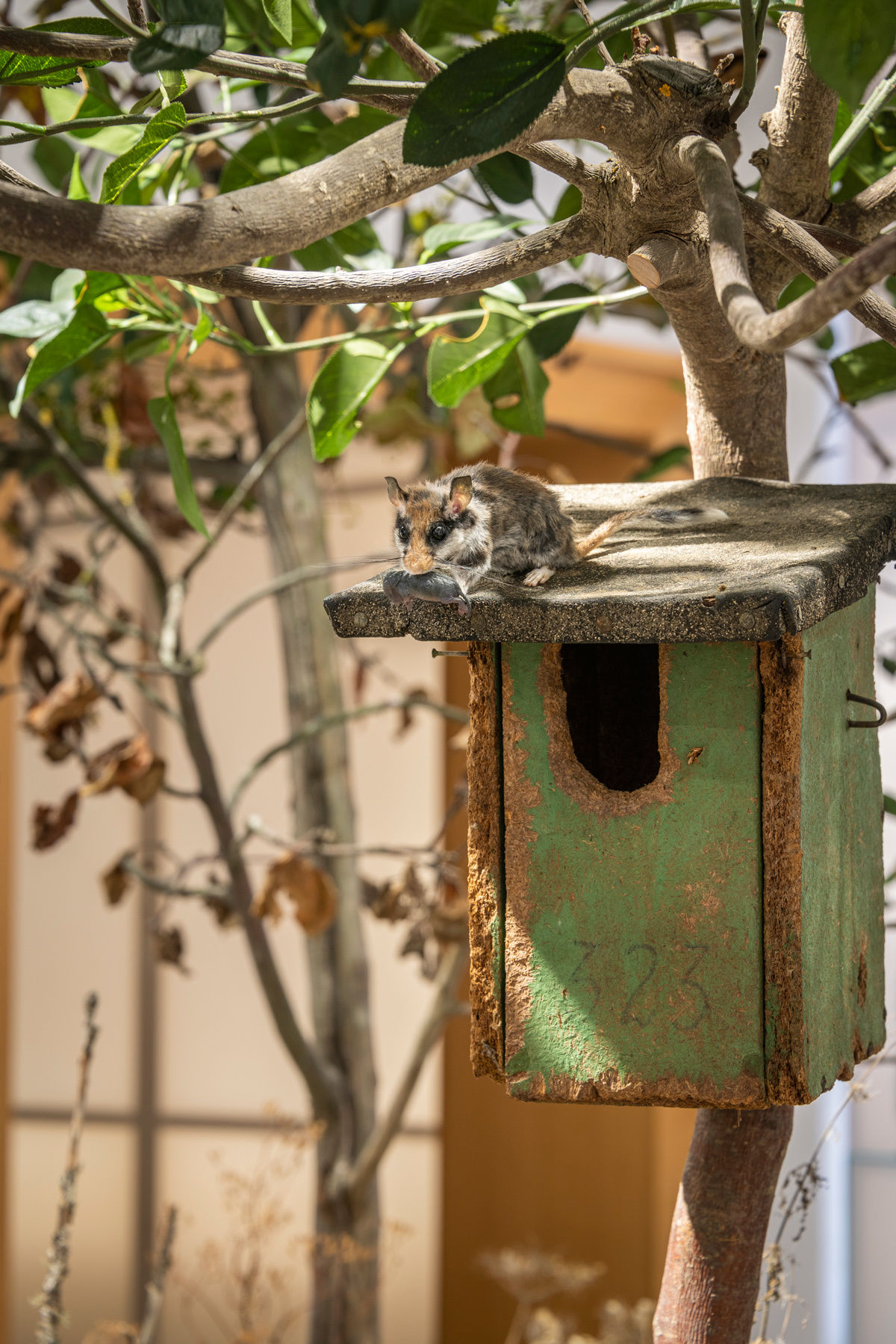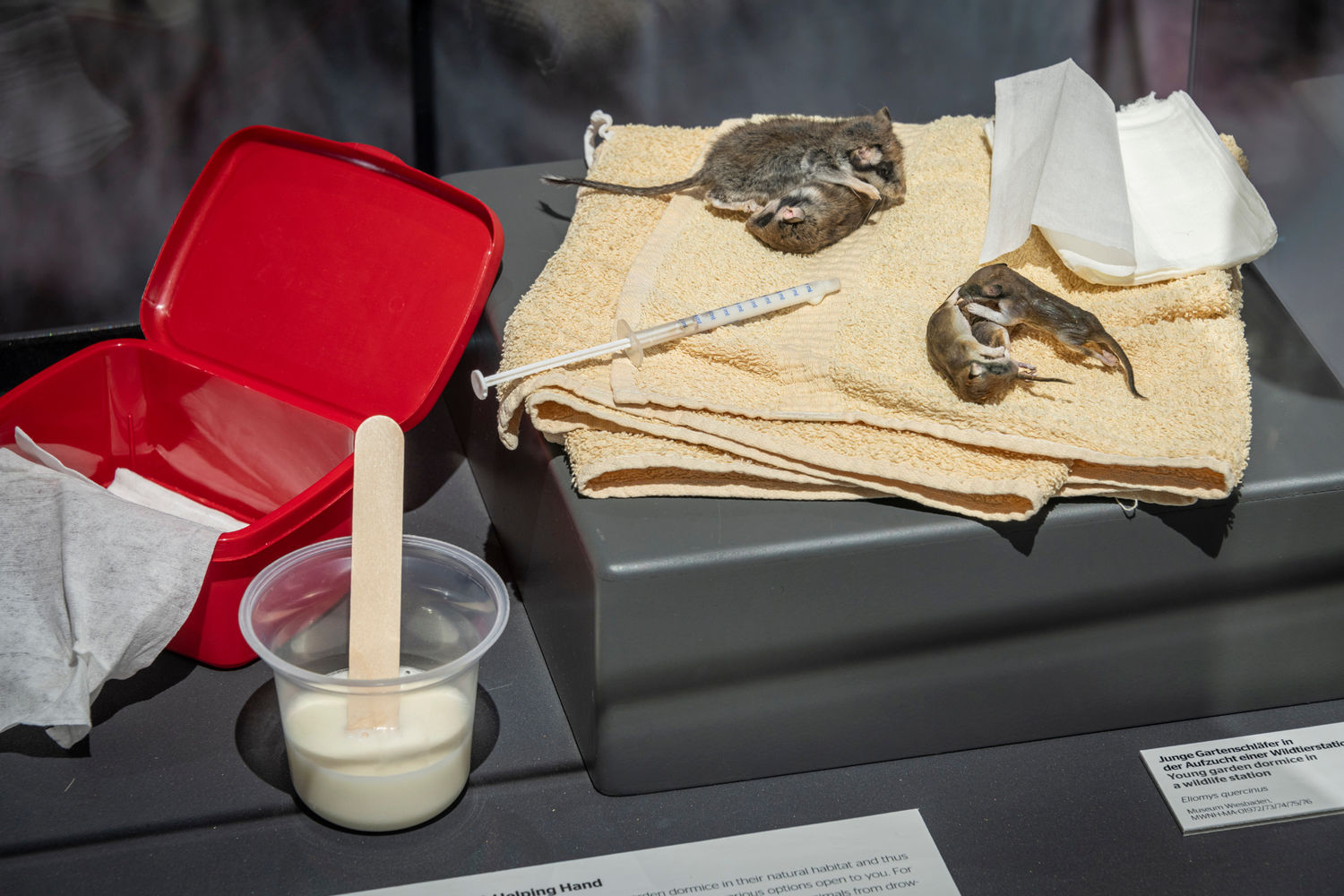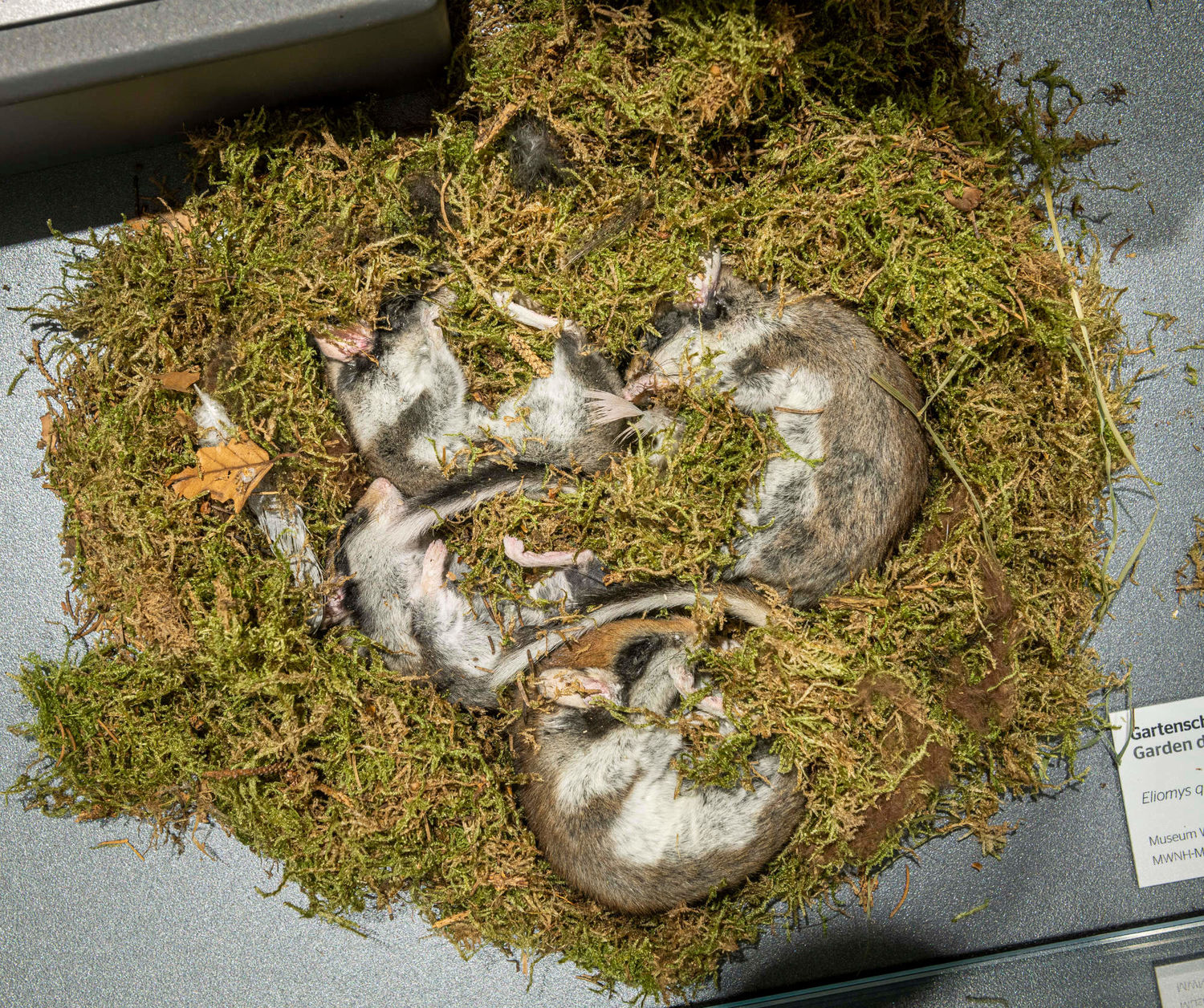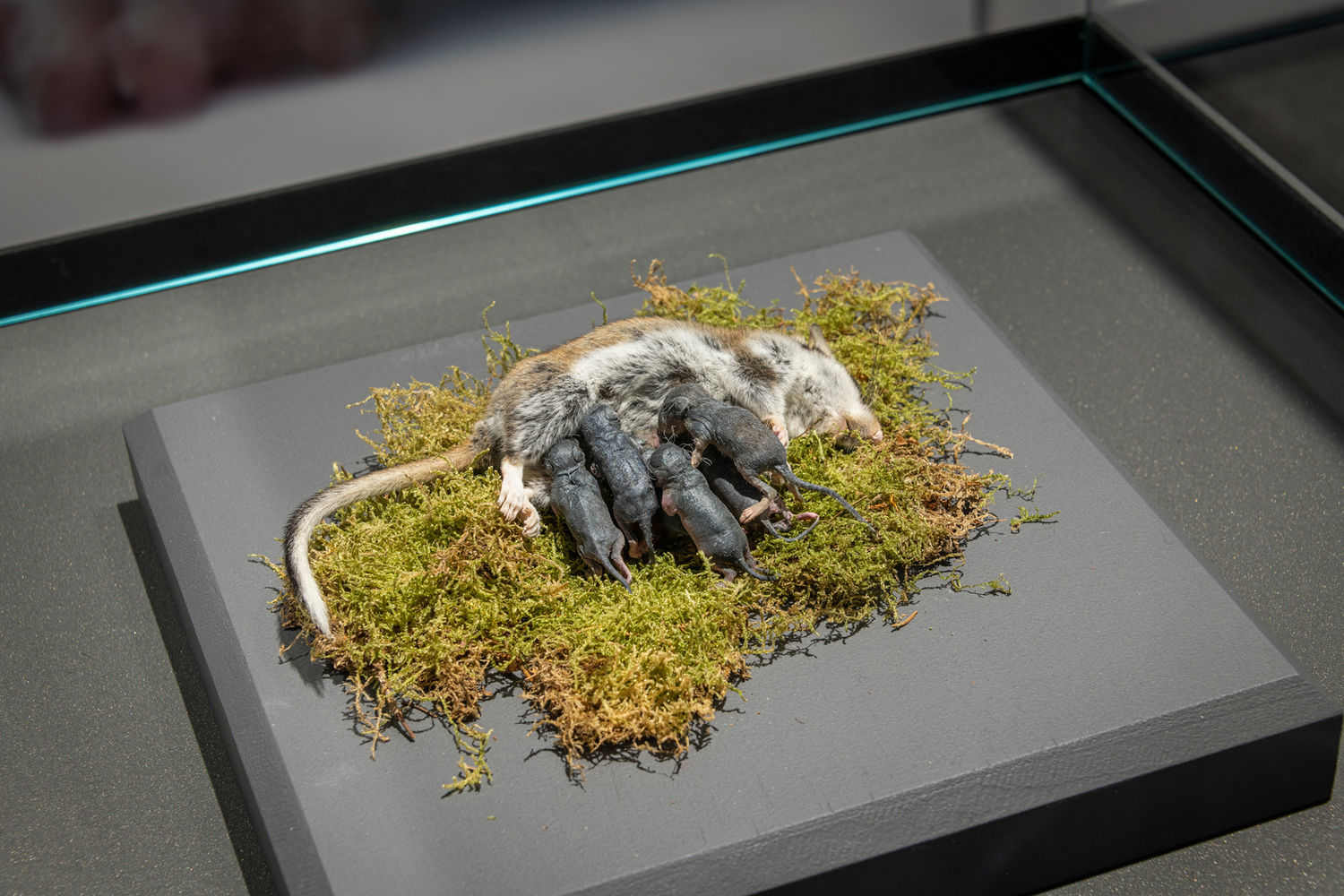View into the exhibition. Photo: Museum Wiesbaden / Bernd Fickert
...and one would be forgiven for thinking it was about a Chinese bear in a German zoo. It isn’t. The exhibit is about something much closer to home: a small rodent called the garden dormouse.With its beautiful facial markings, beady eyes, and long bushy tail, there’s no denying it: the garden dormouse is pretty damn cute. But as a rodent, it really doesn’t have much in common with a bamboo-munching bear. In fact, our decision to call the animal “Germany’s Panda” expresses an urgent wish. When it comes to nature conservation and government policy, we wish that the garden dormouse would receive the same kind of attention that the panda does in China, where protecting the species has long been a prestige project of the state. In our mind, there’s no doubt about it: the garden dormouse deserves the same level of protection over here. It has become very rare in Europe and has disappeared completely in large swathes of its native range. And where it has still managed to survive, populations are in drastic decline. In addition to intensive farming practices and hunting by pet cats allowed to roam outdoors, several other factors are responsible for this worrying decline and they are currently the subject of a few research projects.
The Rhine-Main region, with Wiesbaden at its centre, which the garden dormouse still likes to call home and where it is even a comparatively frequent sight. Because it appears to be one of the very few relatively stable habitats, the region around Wiesbaden has a special responsibility for ensuring the dormouse’s survival. If we let the garden dormouse die out here, then the entire species will be at risk of extinction. For this reason, the dormouse, like the red kite or the freshwater pearl mussel, is one of Germany’s species of national importance and is especially in need of protection status. The Natural History Collections wishes to raise awareness with this exhibition and to advocate for the garden dormouse’s protection.
We admit, living alongside the dormouse can be frustrating at times. It happily lives in residential areas and will occupy birdhouses and nesting boxes, window shutters, or attics and makes quite a bit of dirt and noise. But that’s no reason why it should pay for such inconvenience with its life. Simple household remedies such as vacuuming, cleaning, and wiping down surfaces with a little diluted vinegar are enough to convince the garden dormouse to move back outdoors. People should not attempt to trap the animals and release them outside. Trapping them is illegal. In fact, it requires a special permit and should only be done by trained personnel.








People in Wiesbaden and the surrounding area often come across abandoned nests containing dead young. Or they may find drowned dormice in rain barrels, or dead dormice laid on the stoop by their cat. In such cases, the animals’ remains can be brought into Museum Wiesbaden, which serves as an official collection point for dead dormice. Our taxidermists have been able to use these donations in recent years to create many new museum specimens in preparation for today’s exhibition. These taxidermy specimens play a crucial role in the making of displays and advocating for the protection of the garden dormouse. Without them, an exhibition on Germany’s panda — The Garden Dormouse (until 24 Apr 2022) wouldn’t have been possible at all.
If you would like to learn more or support the research, details are posted here: www.gartenschlaefer.de
Translation: Lance Anderson